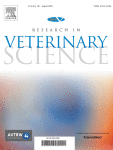Epidemiological impacts of attenuated African swine fever virus circulating in wild boar populations
Nuevo artículo publicado en la revista Research in Veterinary Science.
 Resumen: African swine fever virus (ASFV) genotype II has been present in wild boar in the European Union since 2014. Control measures have reduced the incidence of the ASF, but highly virulent as well as attenuated ASFV strains continue to circulate. We present the intraherd epidemiological parameters of low and highly virulent ASFV in wild boar from experimental data, and for the first time, evaluate the impact of attenuated strain circulation through unique deterministic compartmental model simulations under various potential scenarios and hypotheses.
Resumen: African swine fever virus (ASFV) genotype II has been present in wild boar in the European Union since 2014. Control measures have reduced the incidence of the ASF, but highly virulent as well as attenuated ASFV strains continue to circulate. We present the intraherd epidemiological parameters of low and highly virulent ASFV in wild boar from experimental data, and for the first time, evaluate the impact of attenuated strain circulation through unique deterministic compartmental model simulations under various potential scenarios and hypotheses.
Using an estimated PCR infectious threshold of TPCR = 36.4, we obtained several transmission parameters, like an Rx (experimental intraherd R0) value of 4.5. We also introduce two novel epidemiological parameters: infectious power and resistance power, which indicate the ability of animals to transmit the infection and the reduction in infectiousness after successive exposures to varying virulence strains, respectively.
The presence of ASFV attenuated strains results in 4–17% of animals either remaining in a carrier state or becoming susceptible again when exposed to highly virulent ASFV for more than two years. The timing between exposures to viruses of different virulence also influences the percentage of animals that die or remain susceptible.
The findings of this study can be utilized in epidemiological modelling and provide insight into important risk situations that should be considered for surveillance and future potential ASF vaccination strategies in wild boar.
Martínez M, Bosch J, Ivorra B, Ramos AM, Ito S, Barasona JA y Sánchez-Vizcaíno JM


